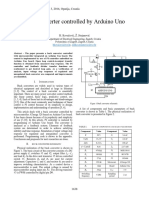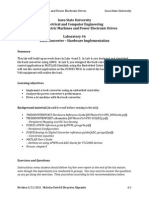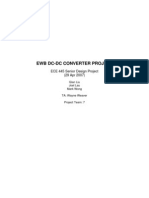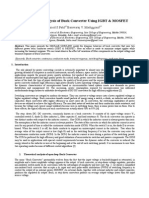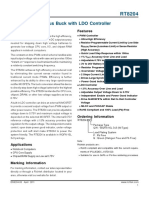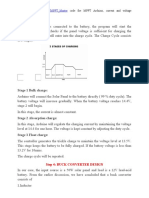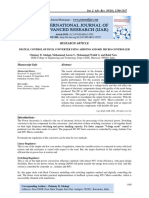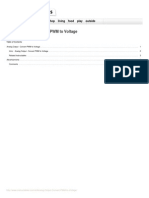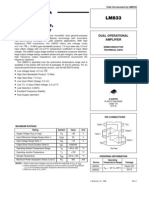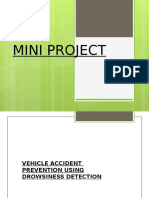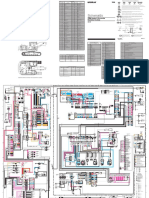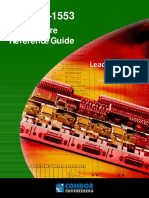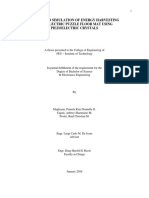0% found this document useful (0 votes)
60 views3 pagesBuck Converter Using Arduino 05
The document outlines a project to design and implement a DC-DC buck converter using an Arduino microcontroller, which steps down voltage through PWM control of a MOSFET. Key components include an Arduino Nano, various capacitors, resistors, and an inductor, with a budget of 4000. The project aims to create a functional prototype, demonstrating the integration of microcontrollers in power electronics and its applications in power supply design and educational tools.
Uploaded by
Arnob HasanCopyright
© © All Rights Reserved
We take content rights seriously. If you suspect this is your content, claim it here.
Available Formats
Download as PDF, TXT or read online on Scribd
0% found this document useful (0 votes)
60 views3 pagesBuck Converter Using Arduino 05
The document outlines a project to design and implement a DC-DC buck converter using an Arduino microcontroller, which steps down voltage through PWM control of a MOSFET. Key components include an Arduino Nano, various capacitors, resistors, and an inductor, with a budget of 4000. The project aims to create a functional prototype, demonstrating the integration of microcontrollers in power electronics and its applications in power supply design and educational tools.
Uploaded by
Arnob HasanCopyright
© © All Rights Reserved
We take content rights seriously. If you suspect this is your content, claim it here.
Available Formats
Download as PDF, TXT or read online on Scribd
/ 3









